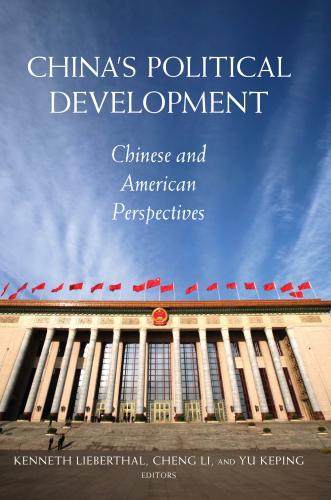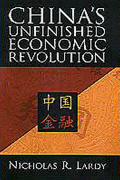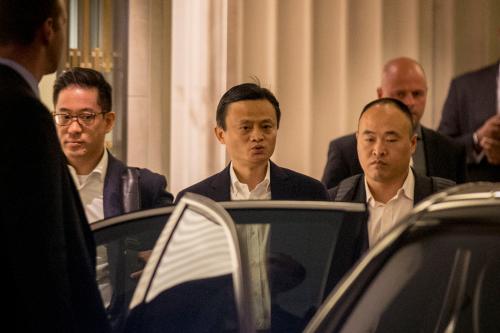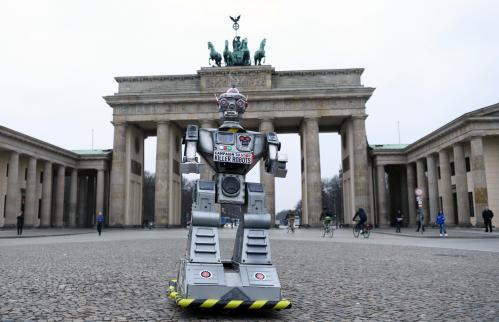Accelerating trends in artificial intelligence (AI) point to significant geopolitical disruption in the years ahead. Much as the Industrial Revolution enabled the rise of the United States and other advanced economies, so AI and machine learning are poised to reshape the global order. Forecasts suggest that AI will add a massive $15.7 trillion to the global economy by 2030.
Prospects for sustaining global competitiveness are now directly tied to the industrialization of AI. The industrial application of AI to a wide array of industries will mean a constant state of innovation. AI is predicted to reshape manufacturing, energy management, urban transportation, agricultural production, labor markets, and financial management. Governments that can successfully cultivate a culture of disruptive innovation will be strategically positioned to lead in the twenty-first century. By contrast, governments that resist AI will find themselves facing a daunting future.
Battle of the Titans
At the research level, the United States remains highly invested in AI and other disruptive technologies. The National Science Foundation currently invests over $100 million each year in AI research. DARPA recently announced a $2 billion investment in an initiative called AI Next whose goal is advancing contextual and adaptive reasoning. Meanwhile, the U.S. military has created a new Joint Artificial Intelligence Center (JAIC) to oversee service and defense agency efforts. More recently, the Trump administration has introduced a new executive order for developing a national strategy around AI but has offered little in terms of effective coordination.
By contrast, China’s government has made AI a top priority. Where the U.S. has established a strong lead in AI discovery, it is increasingly likely that China may dominate the industrial application of AI. Not only does China have advanced commercial capabilities in AI and machine learning, but more importantly, it has a coherent national strategy. Alongside China’s expertise in factory machinery, electronics, infrastructure, and renewable energy, the country’s government is increasingly focusing on AI leadership, coordinating efforts across both the public and private sectors.
According to former Google China head Kai-Fu Lee, China’s innovation system is nurturing a kind of global economic duopoly that will inevitably force countries around the world to choose sides. As Lee points out, the strength of China’s economy is a productive synergy between government policies and market forces. Unlike the U.S., China’s government has become highly invested in leveraging AI to drive its enormous economy. China’s state-led strategy builds on the country’s national champions Baidu, Alibaba, and Tencent in a long-term effort to restructure the global technology market.
The Chinese Century?
China’s government asserts that AI is critical to its future growth. Where China has commoditized computers, electronics, smartphones, infrastructure, telecommunication technologies, and supercomputers, Beijing has now set its sights on ubiquitous AI. This includes autonomous vehicles (AVs), advanced medical equipment, robotics, and financial technologies.
Until very recently, most of the AI-driven innovation deployed by Chinese industries has been incremental rather than disruptive—but this is changing. China’s technology sector is reaching a critical mass of expertise, talent, and capital that is realigning global power. In fact, the Chinese government plans to lead the world in AI by 2030, announcing more than $110bn worth of technology merger and acquisition deals since 2015.
China expects to widen its lead in the industrialization of AI by leveraging massively abundant data and rapid prototyping. The country’s growing internet economy generates vastly more data than any other country, particularly through its fintech industry. The Chinese telecom market is the largest in the world and is expanding into emerging markets in Asia, the Middle East, and Africa. China alone has more than 800 million internet users—98% of whom are mobile users. With instantaneous mobile payments, for example, China’s telecom infrastructure is providing a tsunami of data for training AI algorithms.
Dominating Industrial AI
One very real question today is which country’s economic system will be more successful in the era of industrial AI? China’s highly efficient planning model has become a force to be reckoned with. Even as the big five U.S. technology giants—Amazon, Facebook, Microsoft, Apple, and Google—redefine Western capitalism, China is inventing a kind of “technonationalism”. As the US-China Economics Review Commission explains, the Chinese government has a defined and very comprehensive industrial strategy for deliberately replacing foreign technology and products, both at home and abroad. Building on its domestic firms, China is leveraging massive subsidies for R&D as well as government procurement, foreign investment restrictions, and the recruitment of foreign talent, to lead the field in the industrialization of AI.
While the U.S. retains a significant commercial and research dominance in AI, resources are fragmented and national leadership is weak. Though Congress has recently passed legislation introducing a national security commission on AI, the U.S. still lacks a coherent vision for coordinating AI. Perhaps an even more challenging problem is the deep divide between the public and private sectors. In the wake of the Edward Snowden revelations, technology professionals now repudiate government, wary of colluding with an opaque military-industrial complex.
The bottom line is that China and the U.S. are pursuing very different paths in the race to lead AI. China is reimagining the world as a single complex network of supply chains and trade arteries. Its ambitions in the field of AI are coordinated and strategic. Meanwhile, President Trump’s national populism and protectionist trade policies have effectively undermined the very liberal order that once justified U.S. leadership. This will need to change. Just as a post-war generation built a liberal global order, so today the U.S. is in need of a new and compelling vision for an AI-driven global society.









Commentary
Who will lead in the age of artificial intelligence?
February 26, 2019